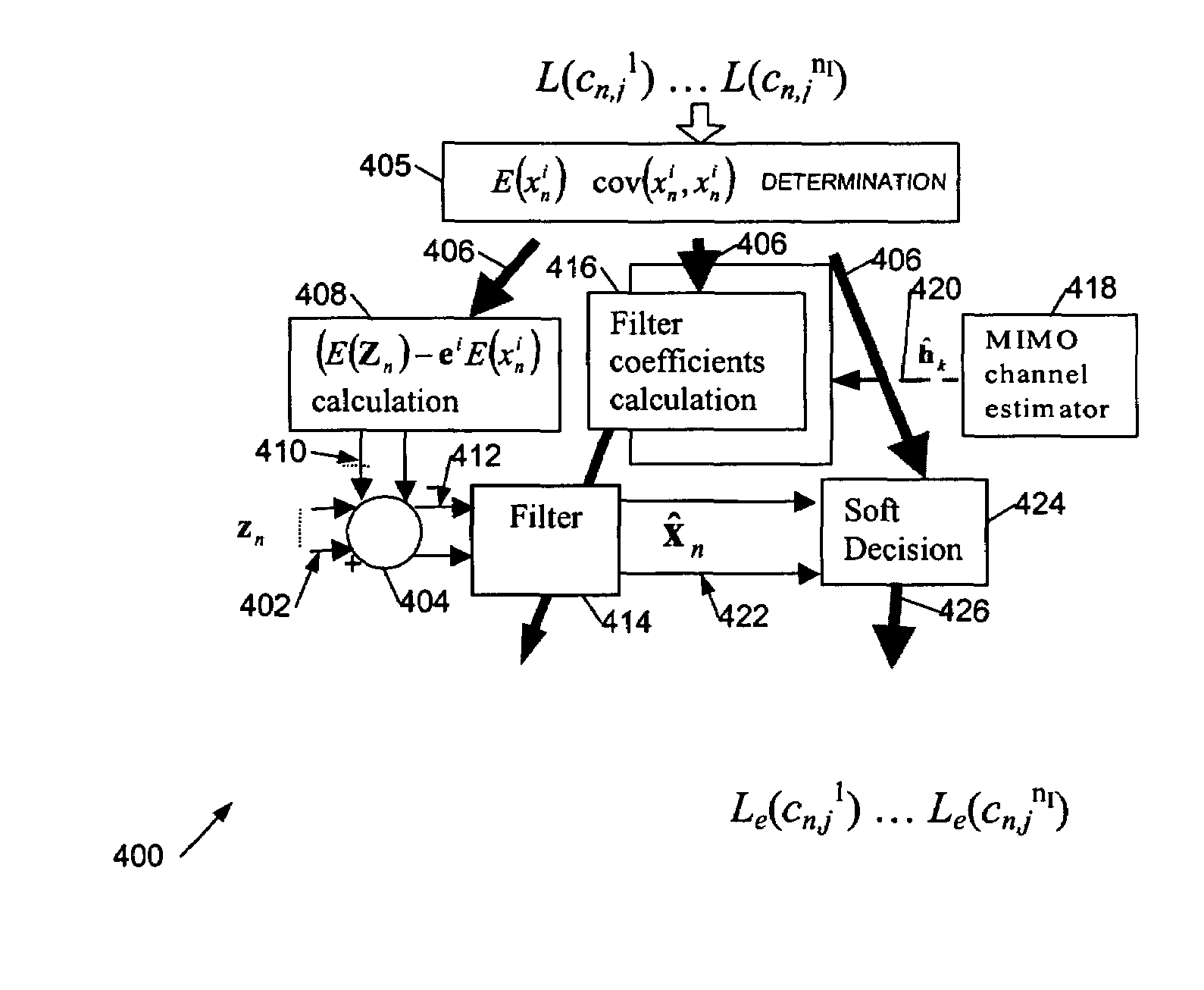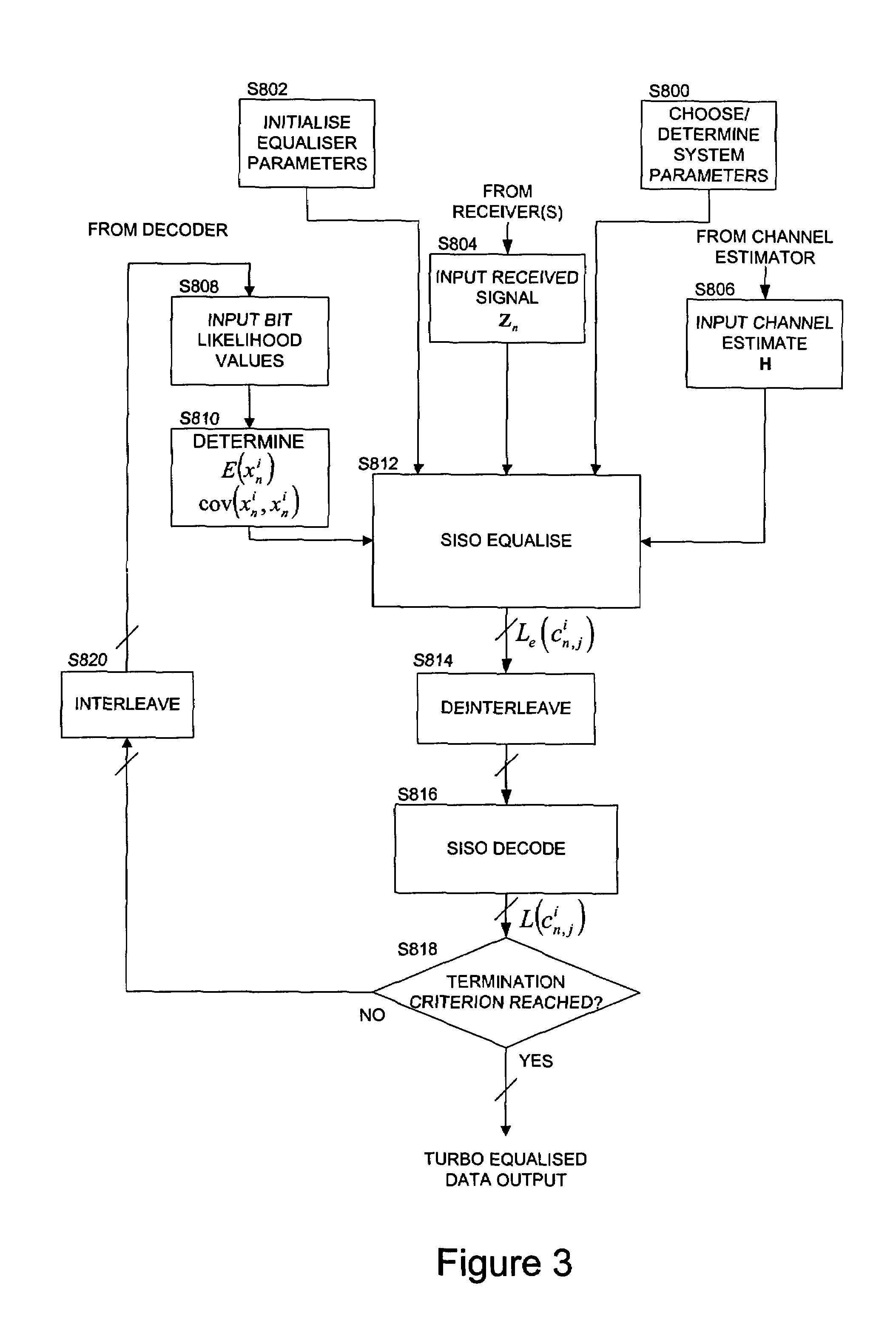Equalisation apparatus and methods
a technology applied in the field of equalisation apparatus and method computer program code in communication system, can solve problems such as computational complexity, and achieve the effect of reducing msi and isi
- Summary
- Abstract
- Description
- Claims
- Application Information
AI Technical Summary
Benefits of technology
Problems solved by technology
Method used
Image
Examples
Embodiment Construction
[0036]Referring to FIG. 2, this shows a block diagram 200 of a MIMO channel model. A multi-stream transmitter has first plurality n1 of transmit antennas 202 and transmits respective symbols xn1, xn2, . . . , xnn1 at time n which comprise “inputs” to a matrix channel 206. A plurality nO of receive antennas 204 provides “outputs” from the nI×nO MIMO matrix channel in the form of received signals zn1, zn2, . . . , znnO. There is a channel with an associated channel response hni,j between the ith transmit antenna and jth receive antenna. The received signal at each receive antenna also includes a noise component wnj.
[0037]In an nI×nO MIMO system the MIMO equalizer aims to provide an estimate of nI transmitted data symbols at every signalling instant. Data from the plurality of transmit antennas are transmitted at the same or overlapping times and using at the same or overlapping frequencies and thus MSI is introduced, as well as ISI from the dispersive wideband channel. In some systems...
PUM
 Login to View More
Login to View More Abstract
Description
Claims
Application Information
 Login to View More
Login to View More - R&D
- Intellectual Property
- Life Sciences
- Materials
- Tech Scout
- Unparalleled Data Quality
- Higher Quality Content
- 60% Fewer Hallucinations
Browse by: Latest US Patents, China's latest patents, Technical Efficacy Thesaurus, Application Domain, Technology Topic, Popular Technical Reports.
© 2025 PatSnap. All rights reserved.Legal|Privacy policy|Modern Slavery Act Transparency Statement|Sitemap|About US| Contact US: help@patsnap.com



